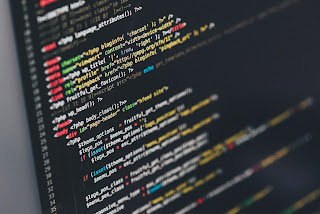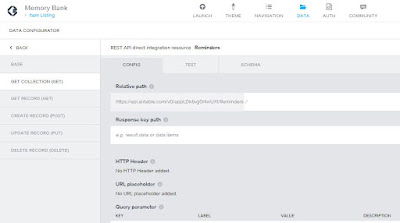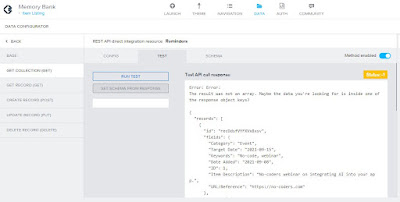OK, you're debating about whether or not to develop a new app using a "no-code" platform - is it a viable option or not? Well, here are a few "pros and cons" to consider:
- Pro - In almost every case no-code platforms offer a much less expensive way to create a usable application than paying a software firm to build the app. The initial cost involved in hiring traditional programmers can be dozens of times more expensive than with no-code or "visual programming" and there's a tendency in any software project for costs to creeping upward as changes and additions become necessary.
- Pro - If you have someone in your organization build the app (or if you have an independent developer build it and teach one of your people how to do it) you retain complete control over the application. If changes need to be made you can do it yourself.
- Pro - Since a modification to the application is usually as simple as plugging in a different "block" of code, feedback from end users can be almost immediate, reducing the time it takes to complete the app (although the time spent in planning and designing the app is probably about the same whether you're using no-code or traditional programming).
- Con - The app is tied to the platform it was built on. No-code programs aren't transferrable from one platform to another (although the documentation covering the app's design and logic are transferrable).
- Pro - Apps can be created and tested much faster with no-code because you're simply connecting pre-built "blocks" of code rather than coding the program from scratch.
- Pro - You're not alone in trying to put your project together. Many no-code platforms have a large and enthusiastic community of users who can provide assistance if needed.
- Con - Since apps are tied to the platform on which they're created, that means (in almost every case) that you're going to have to pay a monthly or annual fee to continue to run your app on that platform. However, there's a considerable range in how much you're going to have to pay - the fee may be $30 a month or $3,000 a month.
- Pro - Most no-code platforms offer "plug-ins" and API connectors that let you extend the capabilities of the platform by "plugging in" chunks of custom code or connecting to outside services like Stripe or Google Maps.
- Pro/Con - Security can be a cause for concern with no-code apps (the same as it is with traditional programming). The fact that the actual program code is hidden makes it difficult to judge how secure the code really is (although there are some software products you can use to scan even a no-code app for vulnerabilities. Plus, creating app on a no-code platform is definitely more secure than having employees creating scripts and macros in an Excel spreadsheet to work with that same data.

















